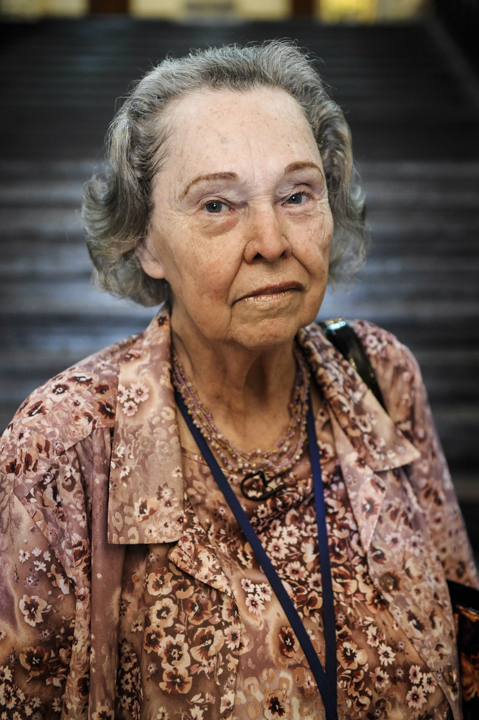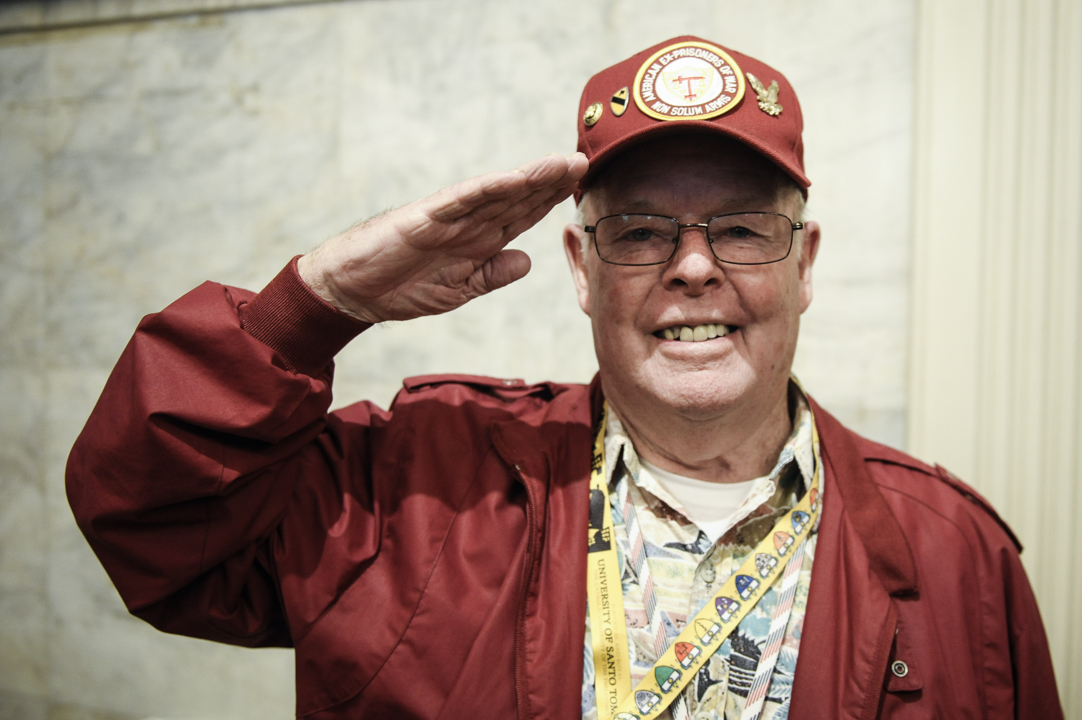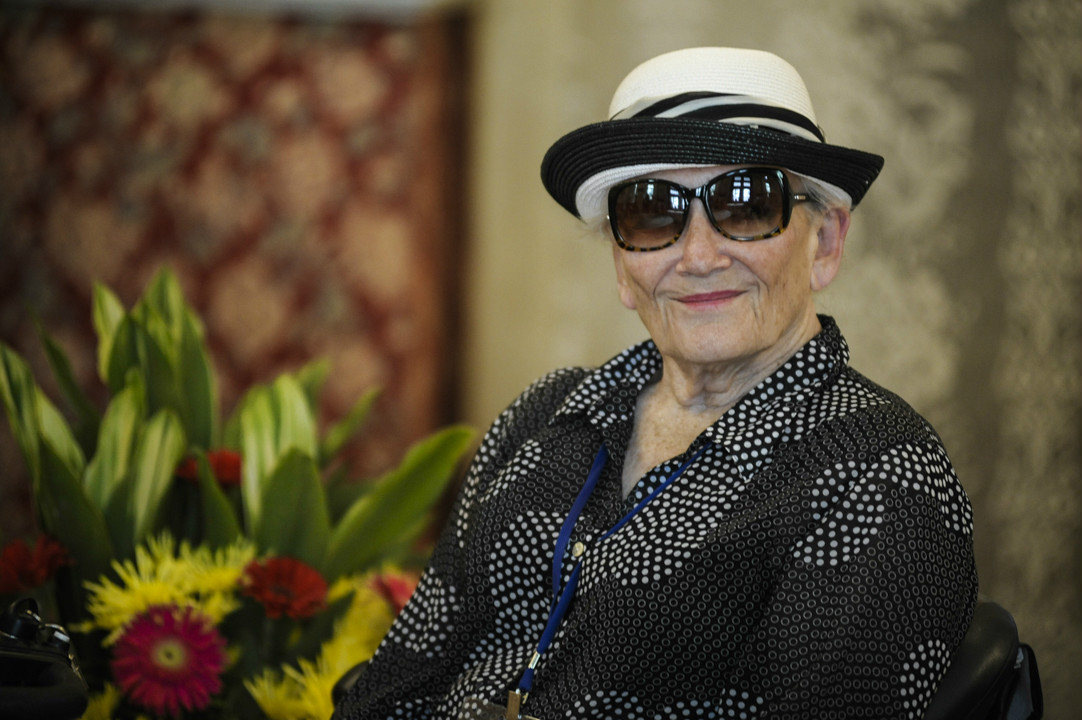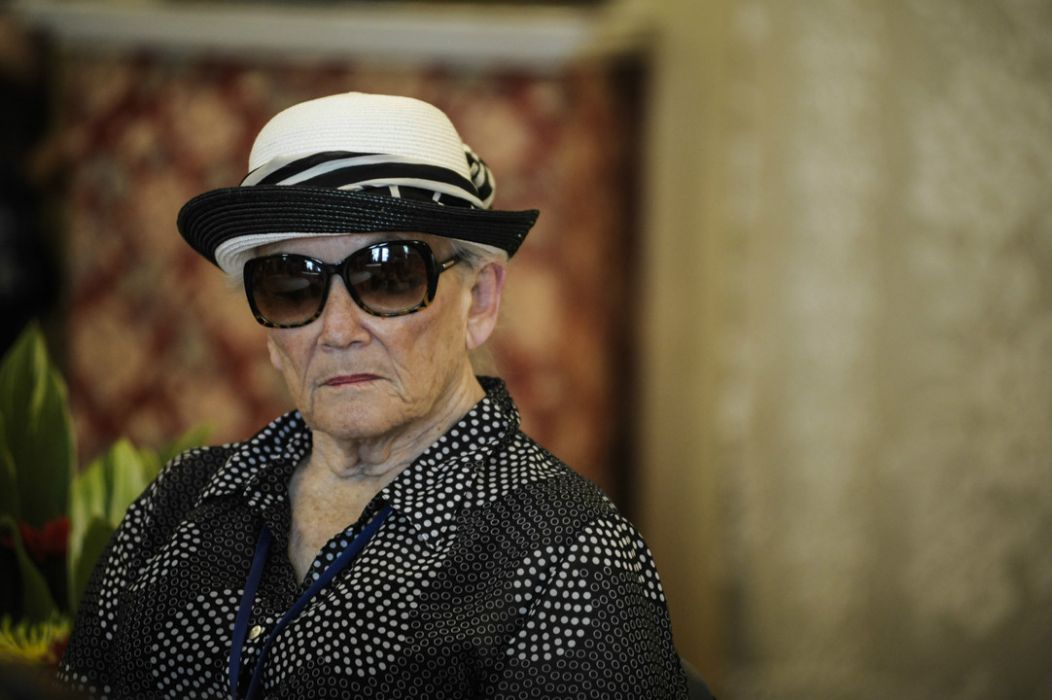Photos by Sherwin Marion T. Vardeleon
American World War II internees made a sentimental visit to the site of the former Santo Tomas Internment Camp in Manila on the 70th anniversary of the Battle of Manila (Feb 3-Mar 3 1945).
Some 20 of the surviving prisoners of war, together with their families, were on hand as the Museum of Arts and Sciences of the University of Santo Tomas opened an exhibit commemorating the liberation of Manila from its Japanese occupiers.
The event was followed by a panel talk with the ageing civilian prisoners. “So what was your key to survival,” one student asked them. “Hope,” replied Sascha Jean Weinzheimer Jansen, 82, who recalled how, on their final year at Santo Tomas, there was nothing to eat but very watery porridge.
Aside from being the largest internment camp in the country, Santo Tomas also had the largest number of prisoners of war; at one time, it had at least 7,000, mostly Americans. There were also British, Canadian, French, Australian and Dutch internees, as all were deemed enemies by the Japanese.
We talk to five brave American survivors — all of them born in the Philippines — who flew in from California as members of the Bay Area Civilian Ex-Prisoners of War (BACEPOW).

Joan Bennett Chapman, 81
“This is the stairs where I was supposed to die,” Ms Chapman gently narrates her recollection of how the Japanese were supposed to herd them to the stairs of the Santo Tomas main building on February 5, 1945, and blast them off. Miraculously, it did not happen. They were rescued. This is her first and last visit to Santo Tomas since the Liberation. “This is a homecoming for me…I have American blood but a Filipino heart.”

Roi Doolan, 79
“We call him TNT Doolan because he was good in boxing,” former internee Sascha Jansen (topmost photo) describes Doolan. TNT is the explosive compound trinitrotoluene. “Because atom bomb had not yet been developed at that time,” quips Doolan.

Tom Crosby, 81
“I and my Mom became emaciated inside the camp during that final year.” This is his first visit since leaving the Philippines after the war. “I thought it was the end but I kept on praying and I’m grateful I’m still alive today.”

Gerry Ann Schwede, 71
“I was born here at Santo Tomas,” says Gerry Ann Schwede, who was still a baby when she was an internee at STIC. She and her family were moved to another internment camp in the town of Los Baños in Laguna province. She was over a year old during the Liberation.

Sascha Jean Weinzheimer Jansen, 82
“During the last year of our stay here, we only ate lugaw (porridge),” recalls Jansen. But there was more water than rice in the porridge and by the time the internees were liberated, they were all emaciated. “There were three men who attempted to escape the camp. They were arrested by the Japanese, brought to Fort Santiago. They were tortured and eventually executed.”
RELATED STORY:
— 10 landmarks that survived the Battle of Manila



